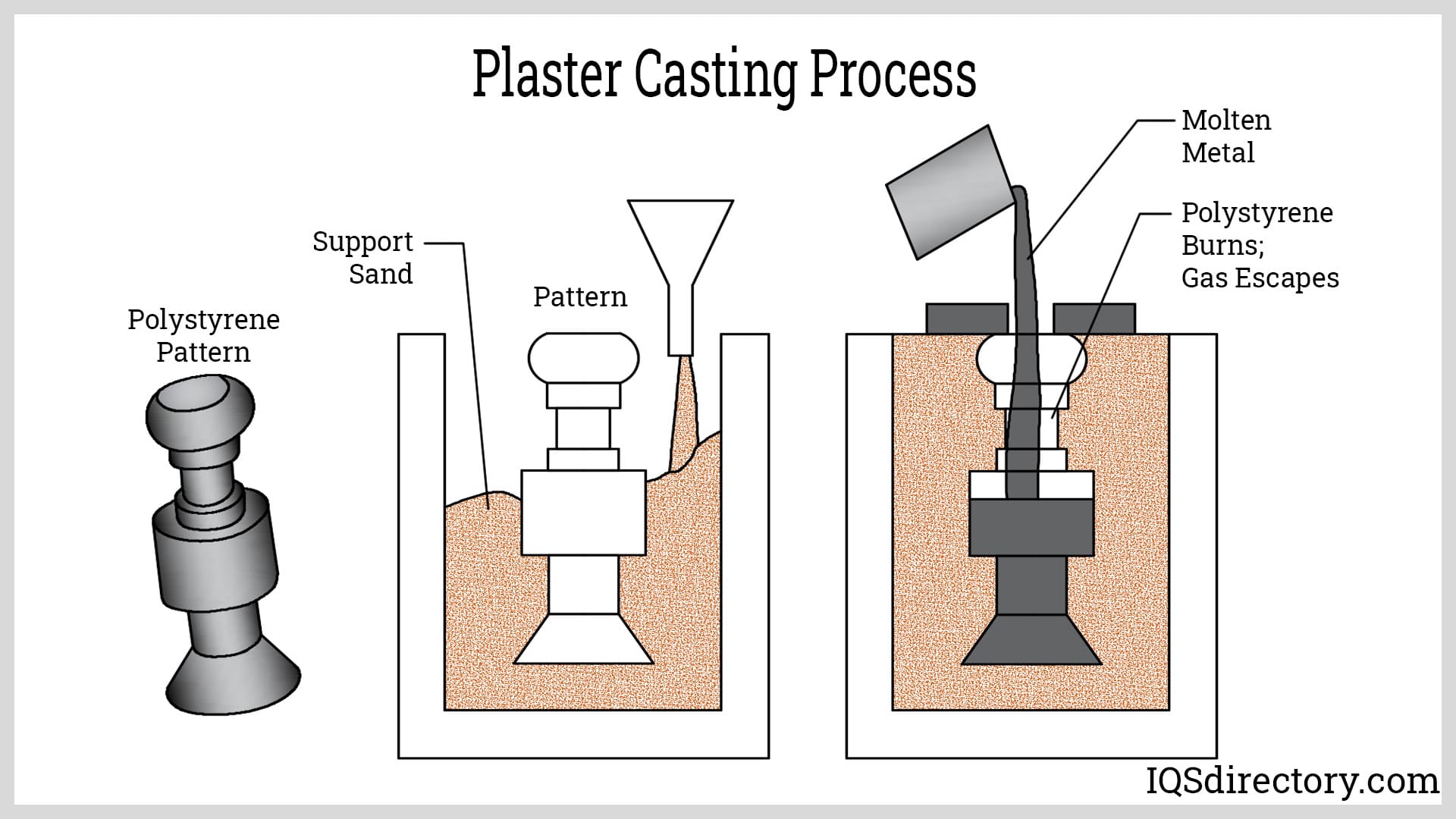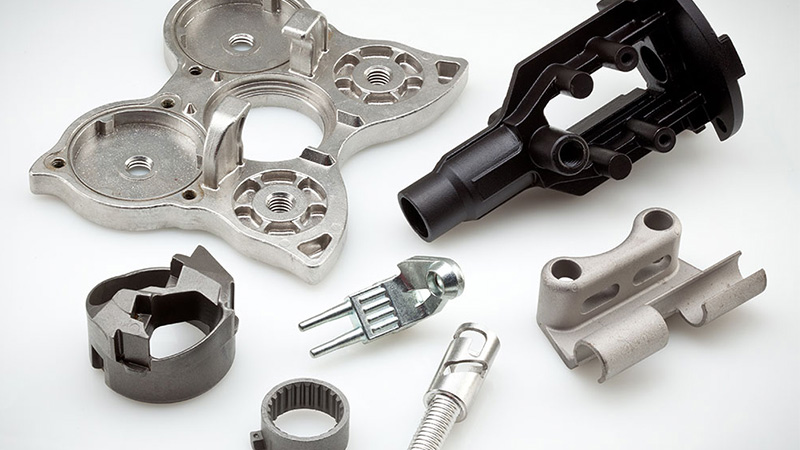Wisconsin Aluminum Foundry: driving excellence in metal casting solutions
Wiki Article
The Role of Metal Casting in Progressing Manufacturing Technologies
Metal Casting have especially affected the advancement of manufacturing modern technologies. They provide distinct style adaptability, allowing the development of detailed geometries necessary for different applications. Modern casting methods are being enhanced by technologies like 3D printing and automation. These developments not just boost effectiveness yet likewise address obstacles in accuracy and sustainability. As industries remain to advance, the duty of Metal Casting remains essential fit their future. What lies in advance in this dynamic area?The Development of Metal Casting Techniques
As the demand for precision and effectiveness in manufacturing has grown, the development of Metal Casting methods has undertaken considerable makeover. Historically, Metal Casting began with easy techniques such as sand casting and lost-wax spreading, which enabled craftsmens to develop elaborate forms. Gradually, innovations in innovation introduced processes like die casting and investment casting, boosting precision and reducing waste. Wisconsin Aluminum Foundry. The introduction of computer-aided design (CAD) and simulation software changed the preparation stages, making it possible for makers to anticipate possible problems and optimize styles before production. Furthermore, the advancement of brand-new products, such as sophisticated alloys and composites, has actually broadened the range of applications for Metal Casting. Automation and robotics have further polished spreading procedures, enhancing consistency and performance. Therefore, the Metal Casting sector has actually adapted to satisfy the requirements of modern manufacturing, concentrating on sustainability and development to continue to be competitive in an ever-evolving market
Applications of Metal Casting in Trick Industries
The advancements in Metal Casting methods have opened up a wide variety of applications across different markets. In the automobile market, Metal Casting are indispensable for generating engine blocks, transmission housings, and other essential elements that call for high stamina and longevity. The aerospace market makes use of spreadings for detailed components like generator blades and structural parts, ensuring lightweight yet robust options for airplane.
Moreover, the building and construction market employs Metal Casting for structural elements such as fittings and beams, adding to the honesty of structures and framework. In the power field, spreadings play a crucial duty in making components for wind generators and power generation equipment, enhancing performance and reliability. Additionally, the medical area take advantage of accuracy castings utilized in surgical instruments and prosthetics, showing the flexibility of Metal Casting throughout diverse applications. This wide application underscores the relevance of Metal Casting in contemporary production techniques.
Benefits of Metal Casting in Modern Manufacturing
Metal Casting provide various advantages that considerably improve modern-day manufacturing processes. One essential advantage is design flexibility; Metal Casting enables the creation of complex forms and detailed geometries that are impossible or commonly difficult to attain with other manufacturing approaches. This ability makes it possible for makers to enhance product styles for functionality and performance.Furthermore, Metal Casting can sustain a vast range of materials, including iron, steel, and light weight aluminum, which can be customized to fulfill details mechanical residential properties and rust resistance demands.

Cost-effectiveness is an additional remarkable advantage; Metal Casting procedures can produce huge amounts of get rid of minimal product waste, therefore lowering production expenses.
Moreover, the sturdiness of actors steel parts adds to the longevity of products, minimizing the demand for constant substitutes. Generally, the advantages of Metal Casting considerably add to efficiency, sustainability, and technology within modern-day manufacturing settings.
Advancements Driving the Future of Metal Casting
While standard Metal Casting techniques have actually served the market well for decades, current innovations are positioned to transform the field. Developments such as 3D printing innovation permit rapid prototyping and the production of complicated geometries that were previously unattainable. These technologies not just boost layout versatility however likewise lower waste and reduce lead times. Furthermore, the combination of automation and robotics in casting procedures is simplifying operations, boosting precision, and enhancing worker safety and security. The growth of composite products and brand-new alloys is enabling the production of stronger, lighter castings tailored for certain applications. Digital innovations, consisting of fabricated knowledge and artificial intelligence, are optimizing spreading criteria and predictive maintenance, driving improved high quality control. Jointly, these advancements are pushing the boundaries of Metal Casting, cultivating greater efficiency and sustainability in production, and positioning the industry for future development and competitiveness.Difficulties and Solutions in Metal Casting Processes
As advancements in Metal Casting technology continue to reshape the sector, numerous challenges continue to be that producers need to resolve to totally take advantage of these developments. One considerable issue is the variability in material buildings, which can cause inconsistent high quality and efficiency. This irregularity frequently arises from variations in basic materials and processing conditions. In addition, the rising prices of power and products present monetary restraints, pushing producers to seek a lot more effective procedures.To battle these challenges, business are increasingly taking on automated systems and advanced simulation techniques to boost accuracy and uniformity. Carrying out high quality control steps throughout the production process also helps in identifying issues early. Spending in study for different materials Aluminum Foundry may enhance and lower expenses sustainability. By addressing these obstacles with ingenious remedies, the Metal Casting sector can enhance efficiency and maintain competitiveness in the evolving manufacturing landscape.
Regularly Asked Concerns
What Materials Are Frequently Used in Steel Casting Procedures?
Typical materials made use of in Metal Casting procedures consist of light weight aluminum, iron, magnesium, and bronze. Each material possesses unique homes that satisfy various applications, enhancing the versatility and functionality of the last cast items in numerous markets.Just How Do Environmental Regulations Impact Metal Casting Workflow?
Ecological guidelines force Metal Casting operations to embrace cleaner practices and innovations, commonly raising manufacturing expenses. Compliance might result in cutting-edge processes that lower waste and discharges, eventually advertising sustainability within the Metal Casting sector.What Are the Security Actions in Metal Casting Facilities?
Security measures in Metal Casting centers include proper ventilation, personal protective equipment, routine safety and security training, tools upkeep, and adherence to safety regulations, guaranteeing a safe setting for employees while lessening threats connected with unsafe products and processes.Exactly How Is Quality Controlled in the Metal Casting Process?
Quality assurance in Metal Casting entails rigorous examinations, including visual evaluations, dimensional checks, and product screening. Adherence to industry criteria and applying high quality administration systems ensures that spreadings fulfill given requirements throughout the production procedure.
What Is the Future Task Expectation for Metal Casting Professionals?
The future job outlook for Metal Casting experts appears appealing, driven by improvements in modern technology and increasing demand across numerous sectors (Aluminum Foundry). Development in automation and sustainable practices will likely create brand-new possibilities in this marketHistorically, Metal Casting began with easy methods such as sand casting and lost-wax spreading, which enabled artisans to create detailed forms. Over time, improvements in innovation introduced procedures like die spreading and investment spreading, improving accuracy and minimizing waste. In addition, the clinical area benefits from accuracy castings used in medical instruments and prosthetics, demonstrating the convenience of Metal Casting throughout diverse applications. Metal Casting supply many advantages that substantially improve modern production processes. Usual materials made use of in Metal Casting procedures consist of light weight aluminum, magnesium, iron, and bronze.
Report this wiki page